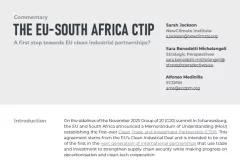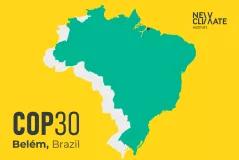As geopolitical tensions and economic uncertainties intensify, it is becoming increasingly clear that overreliance on external energy sources poses significant risks to Southeast Asia’s economies and the well-being of its communities. The region must redefine energy security to achieve sustainable growth, climate resilience and energy security, with electrification, domestic renewables and stronger regional cooperation at its core.
The recent IEA summit revealed a widening global divide over the future of energy security – and the contested role of planet-warming fossil fuels on the path to net zero. Southeast Asia, too, finds itself at a crossroads: to meet surging energy demand driven by population growth, economic development, and industrialisation, should the region double down on fossil fuels or fully commit to accelerating the energy transition?
Recent events have exposed the risks of relying on external energy sources – from price shocks to supply disruptions and market volatility – all of which undermine, rather than strengthen, energy security. Fossil fuels, in particular, remain powerful tools of geopolitical leverage. Tariff policies introduced under the Trump administration are driving some Southeast Asian countries to consider signing liquefied natural gas (LNG) import contracts to appease the US – a move that risks further deepening the region’s already heavy fossil fuel dependence. Meanwhile, Russia’s invasion of Ukraine has once again shown how energy can be weaponised, highlighting the strategic vulnerabilities that come with fossil fuel reliance.
These developments should serve as a wake-up call for Southeast Asia, a key manufacturing hub heavily reliant on imported fossil fuels. Achieving true energy security means redefining it not simply as securing sufficient supply but as building a flexible, resilient system that minimises demand, maximises domestic renewable resources and efficiency, and shields economies from global energy turbulence.
Currently, fossil fuels, particularly coal, oil, and fossil gas, dominate Southeast Asia’s energy mix. Since 2010, fossil fuels, led by coal, have met nearly 80% of Southeast Asia’s rising energy demand. Oil and coal represent over a quarter of the energy mix, with fossil gas making up roughly one-fifth. Touted as cleaner than coal and more affordable than renewables, the region has also increasingly explored fossil gas as a “transitional fuel” to help achieve net zero.
Although fossil gas has not expanded as rapidly as coal in Southeast Asia, it remains central to some national energy strategies. Governments across the region are planning to expand gas-fired power generation. Even in countries where gas plays only a limited role, major investments in LNG terminals and LNG-fired power plants are underway or planned, citing the need to diversify energy sources, enhance energy security, and improve supply flexibility. However, this growing reliance on fossil gas poses considerable risks to the region’s energy security and climate goals.
First, Southeast Asia must import more fossil gas to operate its planned gas-fired power plants as domestic gas production continues to decline. The region is projected to become a net gas importer by 2027. This increasing dependence will drive up import costs, with fossil fuel import bills expected to exceed USD 200 billion by mid-century under current policies, up from around USD 130 billion today.
Second, long-term investments in fossil gas infrastructure now could lock countries into high-emission energy systems for decades, just as wind and solar become the cheapest and most scalable sources. This risks diverting resources from clean energy deployment, slowing the transition to net zero and hindering long-term sustainable growth. Fossil infrastructure also faces a high risk of becoming stranded assets.
Time to Redefine Energy Security
A 2024 research brief, “Navigating the Transition to Net-Zero Emissions in Southeast Asia”, examined the role of gaseous energy carriers, including fossil gas and hydrogen, in net-zero pathways for Indonesia, Vietnam, Thailand, and the Philippines. The findings were clear: fossil gas plays little to no meaningful role in scenarios that enable a smooth transition to net zero. Replacing coal with gas would be costly, especially as renewables are already cost-competitive.
So, what can truly strengthen energy security? The answer lies in decarbonising energy systems through electrification, expanding renewables sourced domestically or regionally, strengthening power grids, and fostering deeper regional cooperation.
Electrification can significantly reduce energy demand and improve system efficiency while reducing carbon emissions. Transport, buildings, and industry sectors can be electrified using technologies like electric vehicles, heat pumps and electric boilers. This approach is far more efficient than switching to green fuels like hydrogen, ammonia and biofuels. Using renewable electricity from sources like solar and wind directly to power electric technologies is cheaper and more efficient than converting electricity into hydrogen or its derivatives and burning them. Since these alternative gaseous fuels will remain expensive and limited in supply, they should be reserved for hard-to-electrify sectors like steel production. In high-electrification net-zero scenarios, the demand for fossil gas drops sharply, easing the region’s import dependence.
Scaling up renewables, integrating them into power systems, and investing in energy storage offer the most viable and affordable path forward. Solar holds great potential across Southeast Asia, while wind power is more geographically concentrated. As renewables begin to displace fossil fuels, the energy systems need to become more flexible to manage the variability of supply and adapt to evolving patterns of electricity demand.
Regional cooperation can also help unlock Southeast Asia’s renewable energy potential. Strengthening cross-border grid interconnections can help balance variable renewable supply and demand across the region, reduce reliance on fossil fuel imports, and lower the overall cost of decarbonisation.
In an era of mounting volatility and worsening climate impacts, fossil fuel-dependent energy systems are no longer a safeguard – they are a significant risk. Southeast Asia must electrify key sectors to enhance energy security, scale renewables, and deepen regional integration. This requires a fundamental policy shift: from merely tweaking fossil-based systems to building a highly efficient, electrified, net-zero energy system. Done right, this transition will lead to a future that is not only zero-carbon but also more affordable, secure, and resilient.
Written by Hyunju (Laeticia) Ock, writer and editor at NewClimate Institute.
The views expressed in this article do not necessarily reflect the views or positions of NewClimate Institute.







